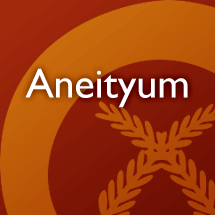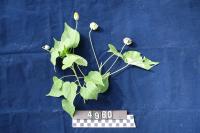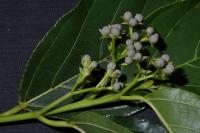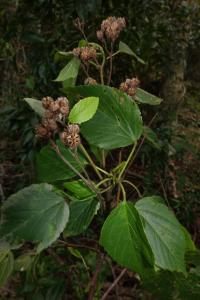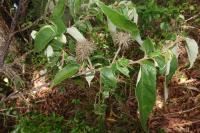Your search for * in family Malvaceae has returned 24 entries
inhau am̃a
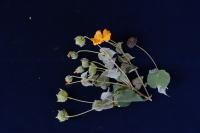
n. shrub, 1. 5 m tall (collection: Gregory M. Plunkett #3560)
Example: In ancient times this plant was used as a fiber to make skirts and rope. Take the stems, remove the leaves, rett the stems in sea water for a few weeks, sun dry the stems and then weave into rope or skirts. This plant is not much used for this purpose at the present time. This plant is used to make a medicine with an unspecified use.
bookmarkinhau amai
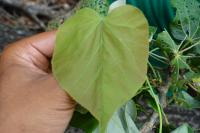
n. moderately branched treelet, 2 m tall (collection: Gregory M. Plunkett #3203)
Example: 1a. This type of hibiscus has young leaves that are reddish in color and it is an edible type. The stems are eaten during April-July. Harvest the stems, beat them and cut off the outer bark. Collect inner bark, slicing it off the stem and wrapping it in a banana type leaf with coconut milk added. Bake all night at least 8 hours, then it is eaten. Said to taste like a root vegetable. Used during the dry season when there are not many crops available. 1b. Take young shoot of the tree then pound the base to separate the base of the bark from the stem but leave it on the stem, say pound 4-5 inches around the base, then come back 3-4 months and the rest of the bark would be thicker. Then cut where it was pounded, cut stem in 1.5-foot pieces, bake on an earth oven, leaves on bottom layer (on top of charcoal) then sticks, then leaves on top, then hot stones, and then more leaves. Bake for 1.5 hours, then remove a stick at a time and use shell to scrape away outer bark, cut into 6 inch pieces, put on log, pound to make softer, put in lap lap leaves leaf wrapping, add coconut milk, put in stone oven, cook for one hour then open lap lap leaves and eat. 2. This variety is for this purpose just like Pohnpei. 3. This variety is not used for grass skirt.
bookmarkinhau cap̃
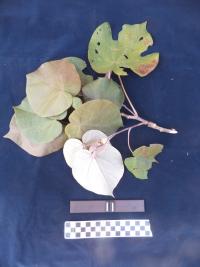
n. low tree. Found along the coast. (collection: Ashley A McGuigan #11)
Example: 1. To speed up delivery and reduce painin labor - Take a piece of stem from a small branch and take the skin and outter bark off. Grate out the inner part with water and squeeze out juice into a cup for the woman to drink. 2. To help with pain/difficulty giving birth - Take even numbers of inhoa top leaves (Must have a partner so the lone top is not vulnerable to bad spirits - in all Rosita’s medicines, she always uses partners like this). Using 2, 4, or 6, of these leaves chew them and swallow the whole thing. This is slippery. Take at the first pain.
bookmarkinhoam̃a
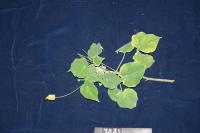
n. shrub, 1 m tall (collection: Gregory M. Plunkett #3441)
Example: Flowers put in hear as an ornament that has power because it is so beautiful. Leaves are burned and added to a bamboo pipe and mix with a foam that forms in fresh water, when people go to a traditional dance, men paint part of their face eyebrows and beard to attract attention, hence the name, pone part of which "am̃a" means "staring", because it will cause people to stare at the one wearing it.
bookmarkinmac
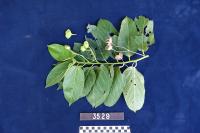
inmopoñ
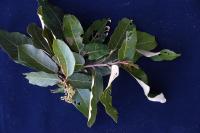
n. tree, 10 m tall (collection: Gregory M. Plunkett #3516)
Example: The young stems are used to make fishing spears. These stems are also used to make the poles that connect an outrigger to a traditional canoe, as they are light and strong. The large trees have extensive roots and stumps and are used as a pen for pigs by making a fence from these.
bookmarkinmoupog
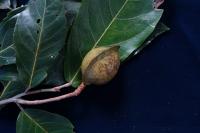
n. tree to 8 m, dbh 20 cm (collection: Michael J. Balick #4927)
Example: The wood of this tree is used as firewood. Children collect the dry fruits and use them for decorations and toys, for example playing with a fruit on the beach, driving it as if it were a toy truck or boat (photo).
bookmarkinp̃al
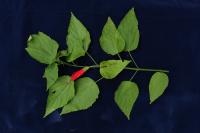
n. treelet or shrub, 1 m tall (collection: Gregory M. Plunkett #3204)
Example: To treat a headache, people traditionally would make a small cut ¼ inch long with a bamboo or piece of glass around the eyebrows where it is soft and then drip juice of the crushed leaves in the cut to take away the pain. Let the cut bleed first and then put the juice in it and it will stop the pain. The bleeding will stop the pain and the leaf juice will stop the bleeding – sometimes the pain will go away immediately and sometimes it takes a few minutes. So this technique is used to treat a very strong headache like a migraine.
bookmarkinp̃al apogen
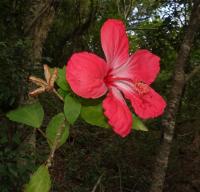
inp̃al cap̃ nesgin
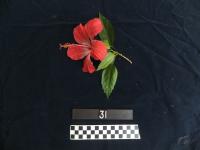
n. shrub. Found in the village, Unames. (collection: Ashley A McGuigan #31)
Example: 1. To cure when the anus falls out - Pound together 1 braches worth of inpalcapnesgin leaves and of both inloptiri (2-4 leaves, any age) , also take the inner bark of nekeaitimi and nakhe. Put this into your hand, or another leaf and give it to the person to use it. This should be applied to the anus whenever the anus comes out. USed to use a clam shell to extract the bark but not anymore.
bookmarkintop̃ hau
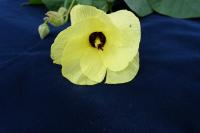
n. well branched tree, 6 m tall (collection: Gregory M. Plunkett #3202)
Example: 1. Young shoots are peeled and made into grass skirts. Scrape the stem and take the green part off, tie strips together and put under stones in the sea for retting, let sit 5 days in sea, but check these on a daily basis. When the fiber becomes soft, that is the time to take it from under the stones, clean off the excess materials, and hang it in the sun to dry for 3 days--this will bleach it and give it a whitish color, at which point it can be woven into a skirt. 2. The fiber can be used to make a small rope that is tied with shells and used for custom dances. 3. When the stems of this tree are older, the wood is very hard and it can be used to make the main frame that is arched for a cyclone house. According to Reuben these houses are not made much anymore on Aneityum Island. 4. To cook the intestines of fish that are eaten, take several leaves and put them in a small pile, making a wrapping, then use a local fiber to tie this together and cook on charcoal for as long as needed to prepare the fish parts. 5. In this area, sometimes knowledge of the plants and flowering are used as a calendar to indicate the time for planting of specific crops. Reuben will provide more details on a future trip. 6a. This species is an important "message plant." If a person is not home and you are visiting from the East--e.g. an Eastern part of the Island--that person can leave a 12 inch piece of stick in front of the door of the house so that the inhabitant knows that an eastern visitor (from Anawonjei district) has come by your home. The reason that person has come to visit is to pass an important message to you--good or bad "luck". The bad luck message might be a death, and is not told directly to the person. The good luck message might be a birth, or conflict that has been resolved. These messages are communicated using sticks--each district has a different species of plant. Reuben’s is the hibiscus. 6b. Message plant for Eastern people. If someone dies, use this plant, clip it in front of hem, in front of home, they ask “who” and you can tell them. In Eastern culture you cannot tell them directly. 7. When a person is too drunk with kava, take a branch of this and brush him with it to help make the effects go away. 8. Traditional plates for food.
bookmarknaevas
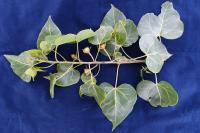
n. sparsely to moderately branched tree, 6-8 m tall (collection: Gregory M. Plunkett #3220)
Example: 1. Wood is used for carving as it is a nice black wood. 2. Also used for house posts. 3. Use sapwood – cut a piece of wood, long one 1-2 m. Put it in front of the house or take a smaller piece on top of the entrance door – protects against bad spirits.
bookmarknamaka
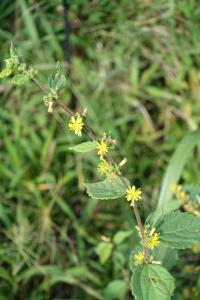
namaka
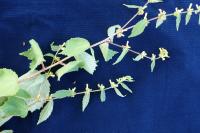
n. herb to 1 m,flowers yellow. (collection: Michael J. Balick #4893)
Example: To make rope, cut the stems, tie together in a bundle and place in the sea. Cover the bundle with rocks for about a week, then take it out, wash it, dry in the sun until the fibers bleach white and use to make grass skirts. This is the process of retting. When the cyclone season is finished, the plant has flowers and fruits--in May through July--this means no danger of cyclones.
bookmarknamakapasi
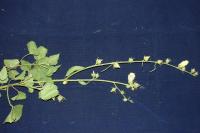
nemla
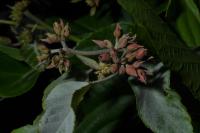
n. tree, 4 m tall (collection: Gregory M. Plunkett #4127)
Example: 1. This wood can be used to start a fire, where there are no matches. Two dried pieces of wood are rubbed vigorously together to create tinder. The tinder is then added to dried material in order to start a fire. 2. The wood of this plant is used as rafters in traditional houses.
bookmarknemtanla
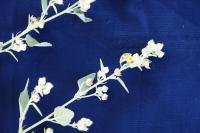
n. herb to 1 m, flowers yellow. (collection: Michael J. Balick #4892)
Example: If a person is coming to a "new" village, e.g. not their own, and they have a branch in their hand, it means that they are coming in peace and not trying to harm anyone else in the new village. Or if they are asking for something that might be found in the new village, they hold the branch of this species and pass it to a person from that village so they will accept you.
bookmarknijma
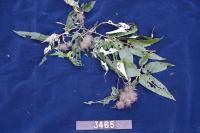
n. fallen tree, growing in canopy gap in primary forest. (collection: Gregory M. Plunkett #3465)
Example: When the flowers of this plant are green, it is an indication that the cool season is approaching; when the flowers are brown, the dry season is coming. The wood is used to make rafters for the roof of houses, on which to tie thatch.
bookmarkwakas
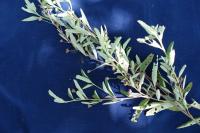
n. herb to 0. 75 m, flowers yellow. (collection: Michael J. Balick #4891)
Example: If a person has the flu, collect the fruits and chew and swallow them. Chew 3 fruits in the morning for 3 days. Take a handful of leaves, still on branches, and boil them in a half liter of water, for 15 minutes. Drink 1 cup daily for 5 days or until the sickness "goes down."
bookmarkwakas
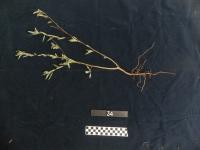
n. herb. Found along intra village path. (collection: Ashley A McGuigan #34)
Example: 1. To make baby grow strong - Take 16 tops of the plant, no flowers, and squeeze them into baby’s bath water. Bath baby in the water and let it dry on the baby. Don’t towel dry. 2. Medicine – take a large leaf, crush and rub it but don’t break it – just soften it and open it and cover the fresh cut with it – leave it there to heal the wound. Keep changing it until the wound gets healed. 3. For headache and fever – flu – take branches with no flowers or seeds, boil it 15 minutes to extract brownish juice, drink 1 cup hot 2, per day – morning and evening for 5 days. 4. The fruits – 7 – chew and swallow for stomachache. 5. Tie stems for broom.
bookmark